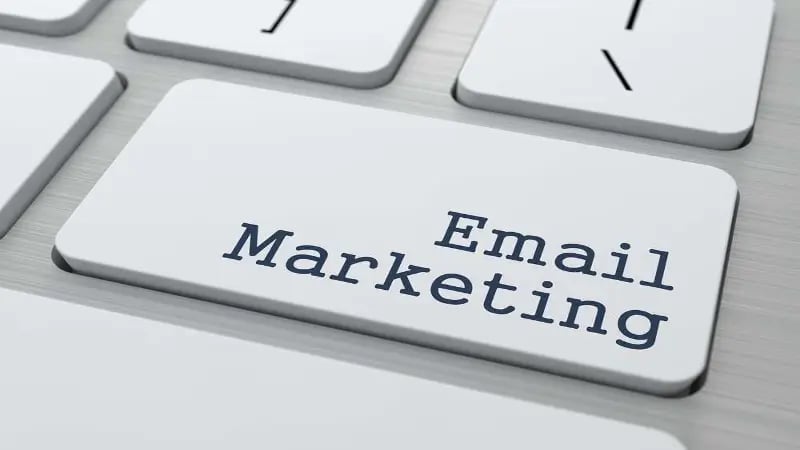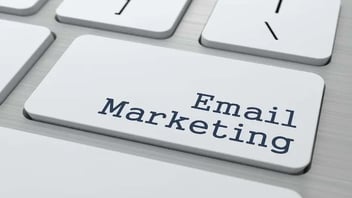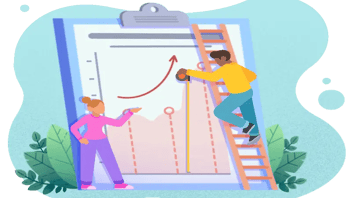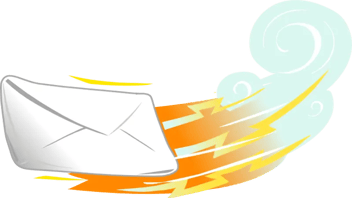Email marketing: Cele mai bune practici pentru campanii eficiente
Cele mai bune practici în marketingul prin e-mail sunt esențiale pentru succes. În timp ce marketingul prin e-mail a luat amploare la începutul secolului XXI, când conturile personale de e-mail au devenit comune, acesta rămâne o modalitate solidă de a genera clienți potențiali și de a converti clienți potențiali pentru afacerea dvs. dacă este realizat corect.
Cu toate acestea, simpla trimitere de e-mailuri nu este suficientă. Prin urmare, înțelegerea și implementarea celor mai bune practici este crucială pentru maximizarea ROI-ului marketingului prin e-mail.
Dacă doriți să vă îmbunătățiți performanța e-mailurilor, iată câteva bune practici de e-mail marketing care vă vor ajuta să generați mai mulți clienți potențiali.
Nu cumpărați niciodată liste de contacte.
Întreaga campanie de e-mail depinde de ratele de deschidere. Dacă contactați persoane ale căror informații le-ați cumpărat în loc să câștigați informațiile dintr-o interacțiune anterioară, veți vedea că performanța e-mailurilor dvs. scade. De asemenea, GDPR (Regulamentul general al UE privind protecția datelor) necesită consimțământul fiecărui destinatar european înainte de a vă contacta, iar listele achiziționate de obicei nu au acest consimțământ.
Nu folosiți no-reply în adresa expeditorului.
Aceasta împiedică destinatarii să răspundă sau să se retragă, ceea ce reprezintă o problemă, deoarece CAN-SPAM (Controlling the Assault of Non-Solicited Pornography and Marketing Act of 2003) protejează dreptul destinatarilor de a se retrage oricând. În plus, este mai probabil ca clienții dvs. să deschidă e-mailurile primite de la o persoană, chiar și numai după prenume. Nu îngreunați furnizarea de feedback de către oricine. E-mailul este o platformă excelentă pentru comunicarea bidirecțională. Încurajați-o.
Reduceți la minimum dezordinea vizuală.
Nu utilizați niciodată mai mult de un maxim absolut de trei fonturi și nu solicitați destinatarilor să defileze orizontal pentru a vedea întregul e-mail.
Optimizați textul de previzualizare.
Personalizați textul de previzualizare, în general primele câteva cuvinte din corpul e-mailului. Nu lăsați sistemul dvs. de e-mail să introducă mesaje pe care nu le doriți ca parte a textului de previzualizare. Acest lucru se poate face, de obicei, prin intermediul instrumentului dvs. de automatizare a marketingului.
Utilizați o semnătură de e-mail.
Oamenii sunt înclinați să citească și să asculte e-mailul dvs. dacă știu că provine de la o persoană, deci includeți semnătura unei persoane reale.
Mențineți o listă de e-mail curată.
Rata dvs. de deschidere se scufundă atunci când păstrați adresele persoanelor care nu au renunțat, dar nu vă deschid niciodată e-mailurile. În mod regulat, găsiți-i pe cei care nu s-au angajat pentru o anumită perioadă și eliminați-i din lista dvs.
Acordați atenție conținutului de deasupra paginii.
Până la 70% dintre destinatari nu vor vedea apelul la acțiune (CTA) dacă acesta este sub fold (necesită derulare). Includeți mai multe CTA-uri în e-mail, în locuri și formate diferite, asigurându-vă că cel puțin unul dintre acestea se află deasupra fold-ului. De asemenea, păstrați mesajul principal deasupra pliului.
Deveniți personal.
Oamenilor le place să primească mesaje personalizate. S-ar putea să știe că software-ul a făcut-o, dar tot pare personal, iar acest lucru le place. Așadar, folosiți-vă instrumentele de e-mail pentru a configura salutul e-mailului dvs. astfel încât să includă automat numele fiecărui destinatar în salutare.
Utilizați e-mailuri de bun venit.
Acest lucru pune bazele unei relații puternice, verificând în același timp capacitatea de livrare, ceea ce, la rândul său, vă ajută să vă păstrați lista curată. Dacă e-mailul de bun venit generează un "hard bounce", știți că trebuie să eliminați adresa din lista dvs.
Mesajul de bun venit confirmă, de asemenea, că înscrierea a funcționat și le permite oamenilor să știe că ceea ce au solicitat este pe drum. Oferiți ceva valoros sau exclusiv pentru noul abonat și îmbunătățiți rata de clicuri.
Faceți multe teste A/B.
Aproape orice parte a conținutului dvs. de marketing digital poate fi îmbunătățită folosind testele A/B sau testele split. Vă împărțiți destinatarii în segmente, apoi trimiteți versiuni diferite ale e-mailului către fiecare dintre aceste segmente, schimbând un singur lucru. Acesta poate fi o linie de subiect diferită, un apel la acțiune sau un element de stil. Vedeți care variantă generează mai multe deschideri sau orice altă acțiune.
Testați pentru a determina cea mai eficientă frecvență.
Trimiterea de e-mailuri insuficiente duce la pierderi de venituri, la scăderea reputației expeditorului, la dificultăți în menținerea unei liste curate și la lipsa prezenței în căsuța de primire. Suprasolicitarea duce la scăderea implicării, creșterea numărului de opt-out-uri și reducerea vizibilității. Trebuie să testați segmente ale publicului dvs. pentru a determina frecvența optimă pentru dvs.
Fiți prudent cu stimulentele pentru a crește ratele de deschidere.
Nu copleșiți cititorii cu e-mailuri legate de produse. Fidelizarea clienților începe atunci când le oferiți informații despre industrie și alte informații utile. Apoi, puteți vorbi despre afaceri și folosi stimulente pentru a crește ratele de deschidere.
Furnizați un CTA pentru abonare.
Presupuneți că cititorilor dvs. le place conținutul dvs. și transmit e-mailurile dvs. prietenilor lor pentru a le verifica. Furnizați un CTA mic, dar vizibil, astfel încât acești noi cititori să se poată abona. Având în vedere că e-mailul dvs. conduce probabil la o altă acțiune, cum ar fi descărcarea de conținut, asigurați-vă că acest buton de abonare nu distrage atenția sau nu creează confuzie.
Elaborați cu atenție liniile de subiect.
Fă-le convingătoare și concise. Înțelepciunea convențională spune între 30 și 50 de caractere. Acesta ar trebui să creeze un sentiment de urgență, oferind în același timp cititorilor o indicație a ceea ce îi așteaptă. Luați-vă timp pentru a testa A/B liniile de subiect, astfel încât să vă puteți baza pe ceea ce spun datele, nu doar pe intuiție. Utilizați cuvinte puternice, întrebări, expresii idiomatice și alte tactici care credeți că vă vor capta publicul.
Corelați e-mailurile cu paginile de destinație.
Acestea ar trebui să se potrivească în ceea ce privește titlul, copia și conținutul. Aspectul și senzația ar trebui să se potrivească. Consecvența construiește încrederea clientului în conținutul dvs. Asigurați-vă că folosiți instrumente de urmărire pentru a vedea care e-mailuri și pagini de destinație au avut cele mai bune rezultate, astfel încât să puteți continua să trimiteți ceea ce funcționează.
Spuneți o poveste.
Conținutul captivant duce la mai multe click-uri. Uitați-vă la buletinele dvs. de e-mail preferate. Probabil că veți găsi câteva puncte comune. Acestea spun povești interesante, oferă articole care te fac să te gândești, te țin la curent cu știrile din industrie sau poate te fac să râzi cu un scurt videoclip. Este într-adevăr un clișeu, dar trebuie să fiți creativi.
Nu uitați să proiectați pentru accesibilitate.
Nu uitați să includeți toți acei posibili membri ai publicului cu dificultăți de vedere. Adăugați text ALT la imagini, astfel încât persoanele care utilizează un cititor de ecran să poată înțelege mai bine conținutul. Adăugați un punct după textul imaginii, astfel încât cititorul de ecran să facă o pauză, permițând o înțelegere mai ușoară a e-mailului dvs. De asemenea, puteți ajusta raportul de contrast al imaginii pentru a maximiza lizibilitatea.
Oferiți cele mai bune practici.
Conținutul e-mailului dvs. trebuie să fie relevant și practic, adică să contribuie pozitiv la viața profesională sau personală a cititorilor dvs. Altfel, de ce să-l trimiteți? Fiți întotdeauna util.
Fiți "skimmable".
Creșteți rata de implicare comunicându-vă mesajul cât mai repede posibil. Structura conținutului dvs. trebuie să fie ușor de citit și de înțeles. Utilizați bullet points, titluri, subtitluri, liste și text de antet pentru a vă expune rapid și clar mesajul principal.
Sunteți gata să trimiteți următorul dvs. e-mail de marketing? Verifică-ți mesajul și descarcă-ți GRATUIT lista de verificare pentru e-mail marketing făcând clic mai jos.
Acest conținut este disponibil și în:
- Germană: E-Mail-Marketing: Wesentliche Best Practices für wirksame Kampagnen
- Engleză: Email Marketing: Essential Best Practices for Effective Campaigns
- Spaniolă: Email Marketing: Mejores prácticas para campañas efectivas
- Franceză: Marketing par courriel : Meilleures pratiques pour campagnes efficaces
- Italiană: Email marketing: Migliori pratiche essenziali per campagne efficaci
- Chineză: 电子邮件营销:有效营销活动的基本最佳实践









Lasă un comentariu cu părerea ta.